“Street Photography” is a term that actually means “candid photography of people in the street” as in the famous photographs of Henri Cartier-Bresson. So that usually requires that you are doing it without those people’s consent. That makes it a bit tricky, but it is legal in Italy if it is not for commercial purposes, as this article explains.
Candid means not staged, although there are degrees of candidness. The very famous 1951 photograph An American Girl in Italy (actually one of a series) was planned by the photographer and the subject, who even did a second pass through the group of men to try and get better reactions. Despite her apparent distress, the subject, Ninalee Allen, claimed to have enjoyed herself thoroughly, imagining herself as Beatrice in a famous Victorian painting of Dante and Beatrice, as explained in her 2018 obituary in The Economist. Afterwards she went for a ride on the back of the scooter on the right.
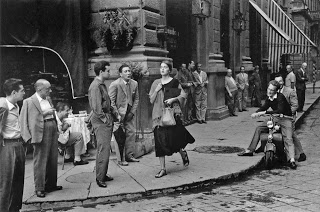
And of course there are some good although much less famous examples from Francis Sandwith here.
My approach tends towards the opportunistic, and I do worry about the privacy aspect. That being said, the group of jolly gondolieri below, sauntering along the Riva degli Schiavoni in their traditional costumes looking for business can probably be assumed not to be seeking privacy. Similarly, people dressing up in historical costume and parading in the streets are not doing it for privacy either.
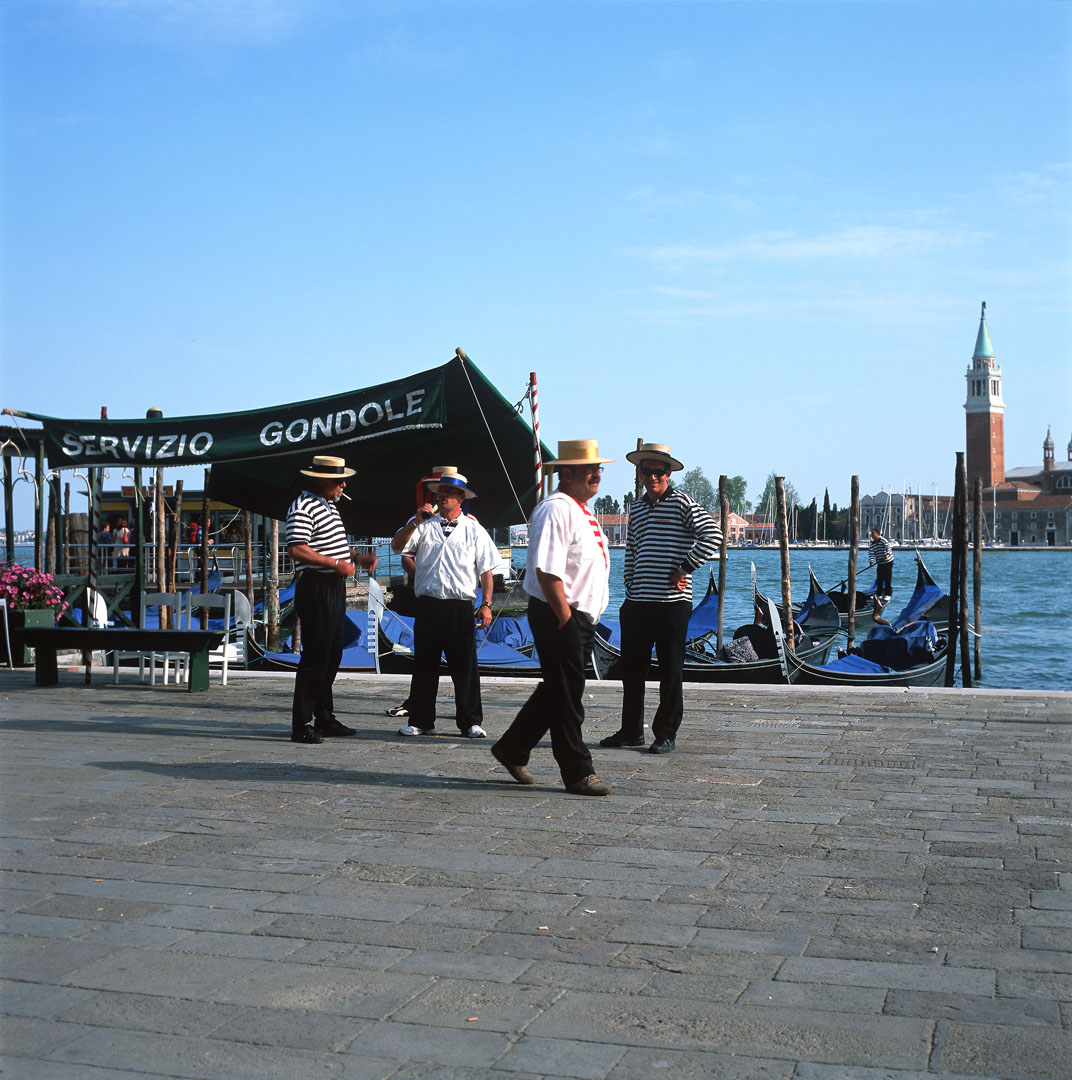
Children make good subjects, thanks to their lack of self-consciousness, however – sadly – taking candid pictures of children can be thought a bit creepy in these nervous times, so it is a good idea to make sure that they are anonymous.
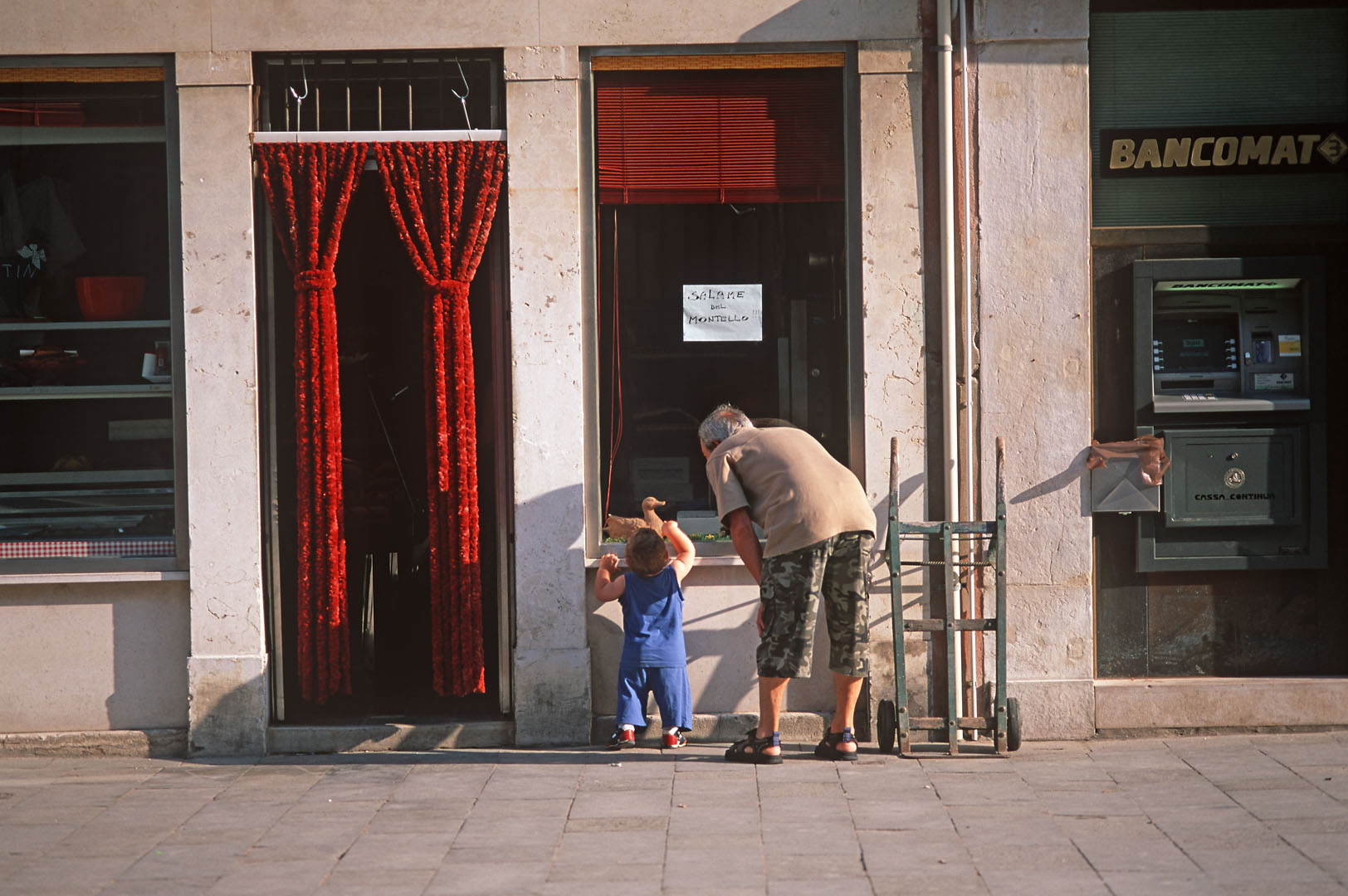
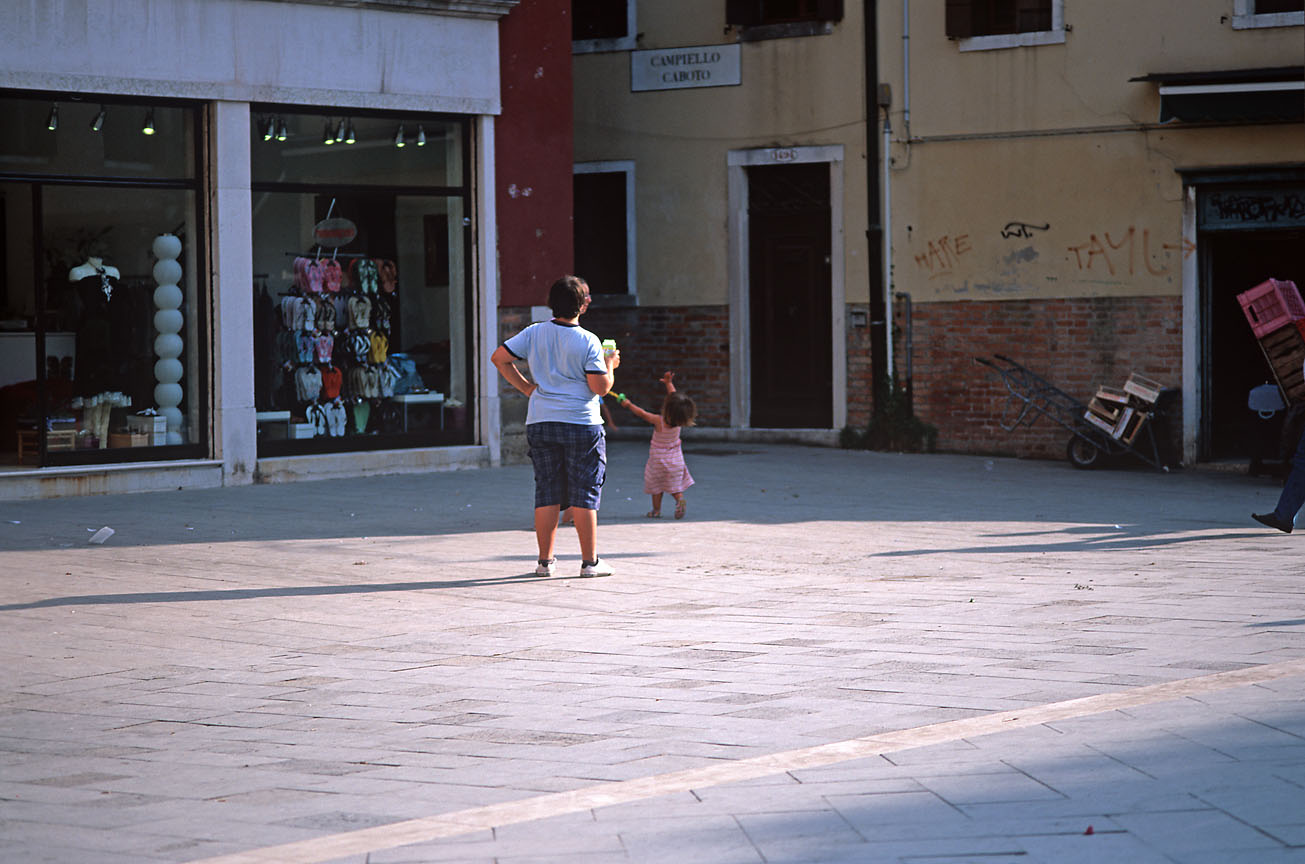
People who clearly have no expectation of privacy, or right to it, are those who walk in front of me when I am obviously trying to take a photograph. You have been warned.
A good example of street photography won’t just be a picture of people milling about aimlessly. There should be something special about it – it might tell a story, like Ninalee being ogled in Florence, or it might make the viewer speculate about what is happening. Sometimes there might be an element of drama, or you might catch someone in a serendipitous artistic pose, or in a position which adds to the composition.
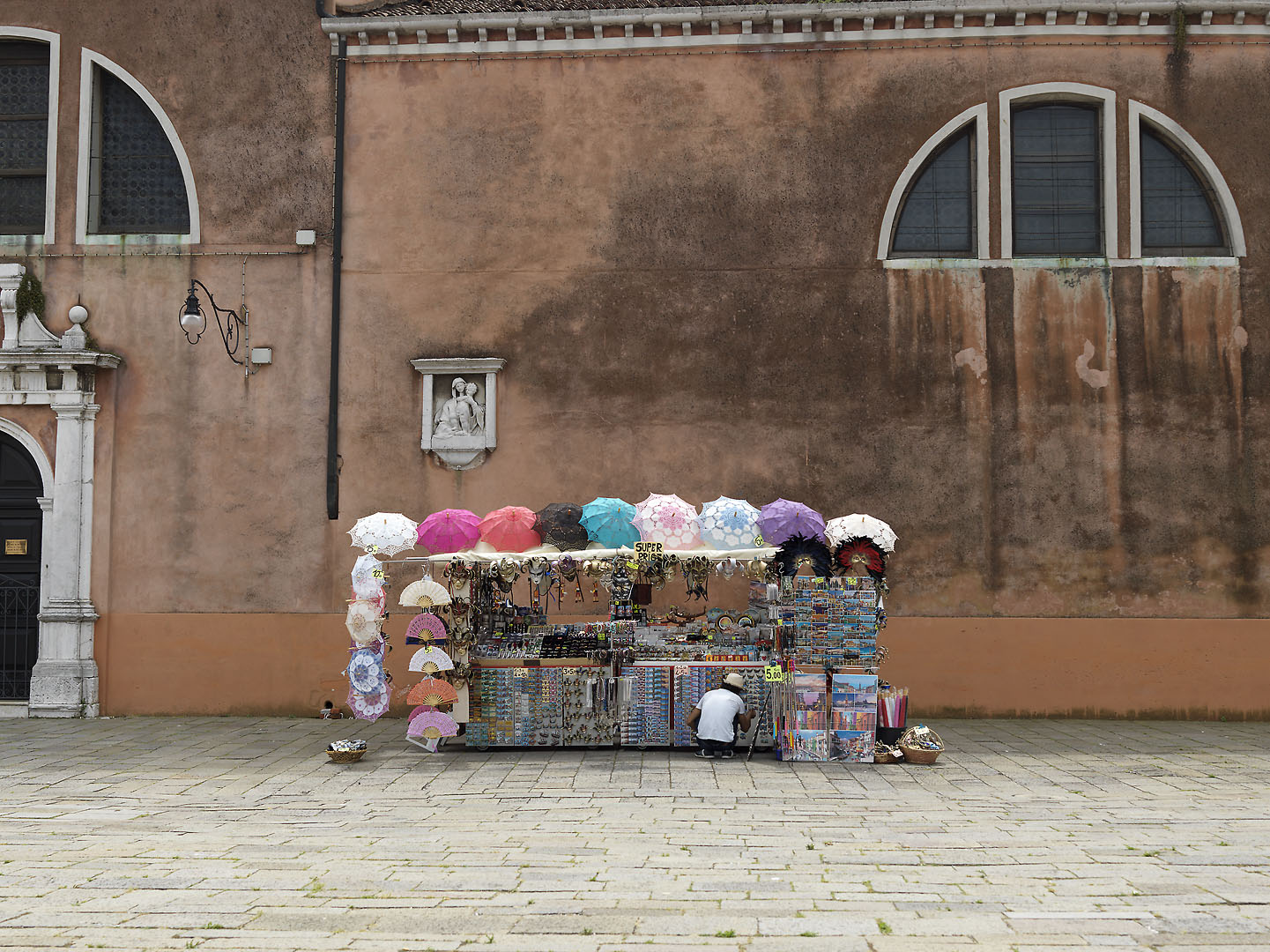
My favourite camera for street photography was my beloved Contax G1 35mm film camera(1). It was small, quiet and unobtrusive, and its quick autofocus and large-aperture Zeiss lenses meant that you could quickly grab a sharp image. In comparison, the medium-format Hasselblad V-series is pretty large, needs to be focussed manually, and makes a terrifically loud agricultural-sounding clonk when you trip the shutter, so it isn’t particularly subtle. That being said, you can always fit a longer lens and take from further away. And although I usually use an eye-level prism viewfinder on the Hasselblad, if you fit the traditional looking-down-from-above waist-level viewfinder, you can be a bit sneaky about composing the shot.
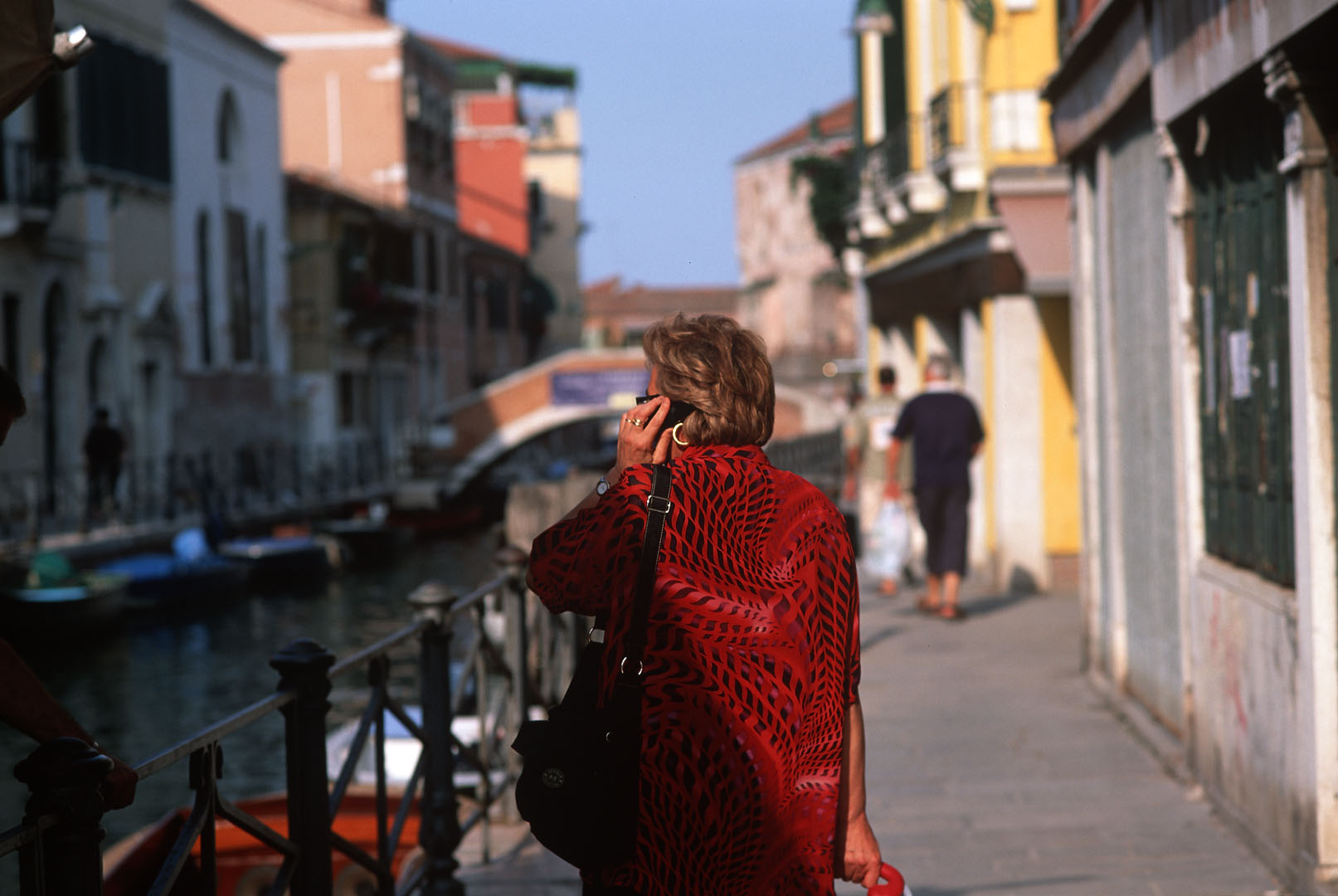
Sometimes you can add the drama yourself through photographic artefacts. In the picture below, I was looking down on St Mark’s Square and realised that with some people moving quickly and some standing still, a slow-ish exposure through a long lens might show some people blurred and some sharp. I had to steady the camera on the balustrade of the St Mark’s Basilica portico, but the result was acceptable.
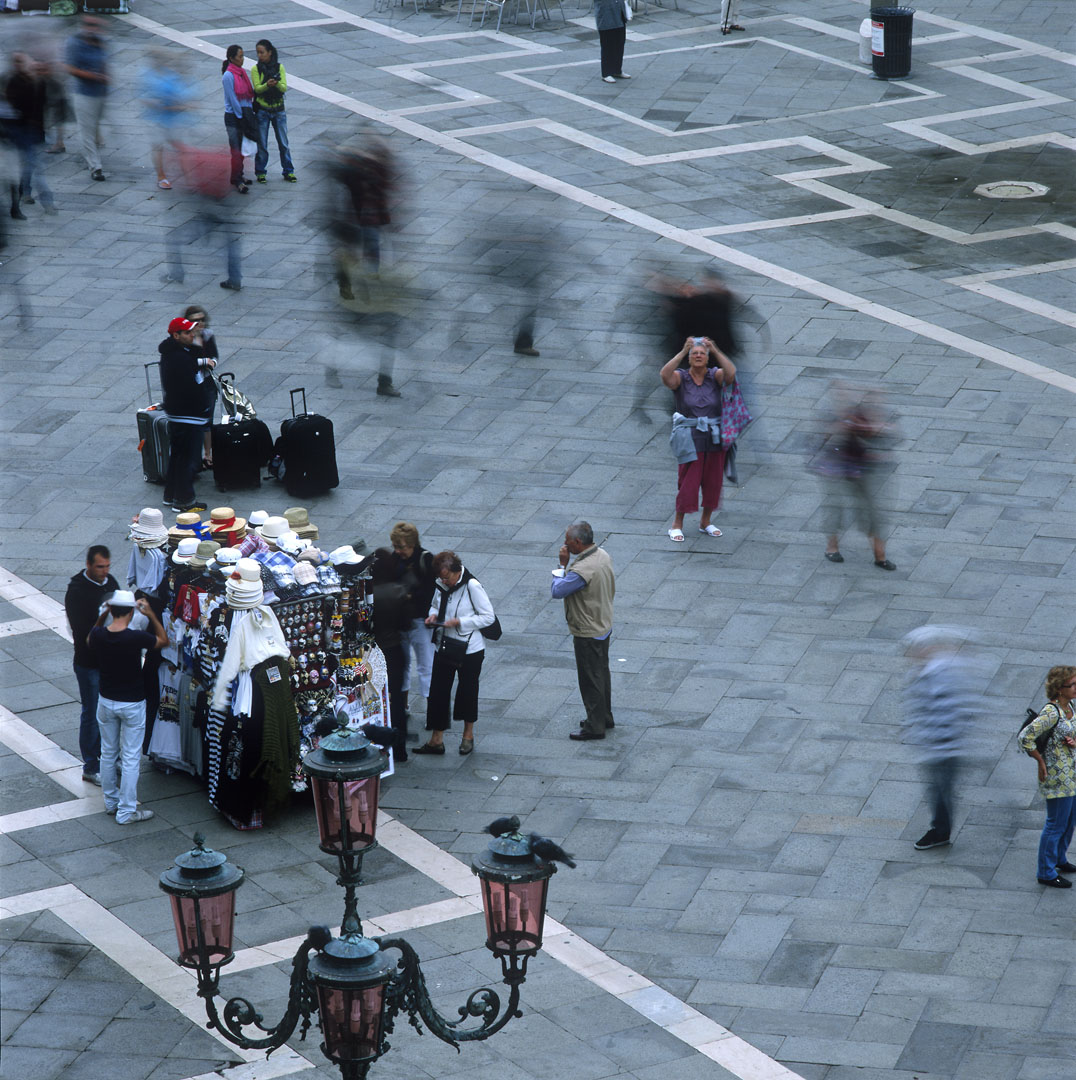
If children make great unselfconscious subjects, dogs are even better (to the best of my knowledge, no-one has yet deemed it creepy to take pictures of dogs).
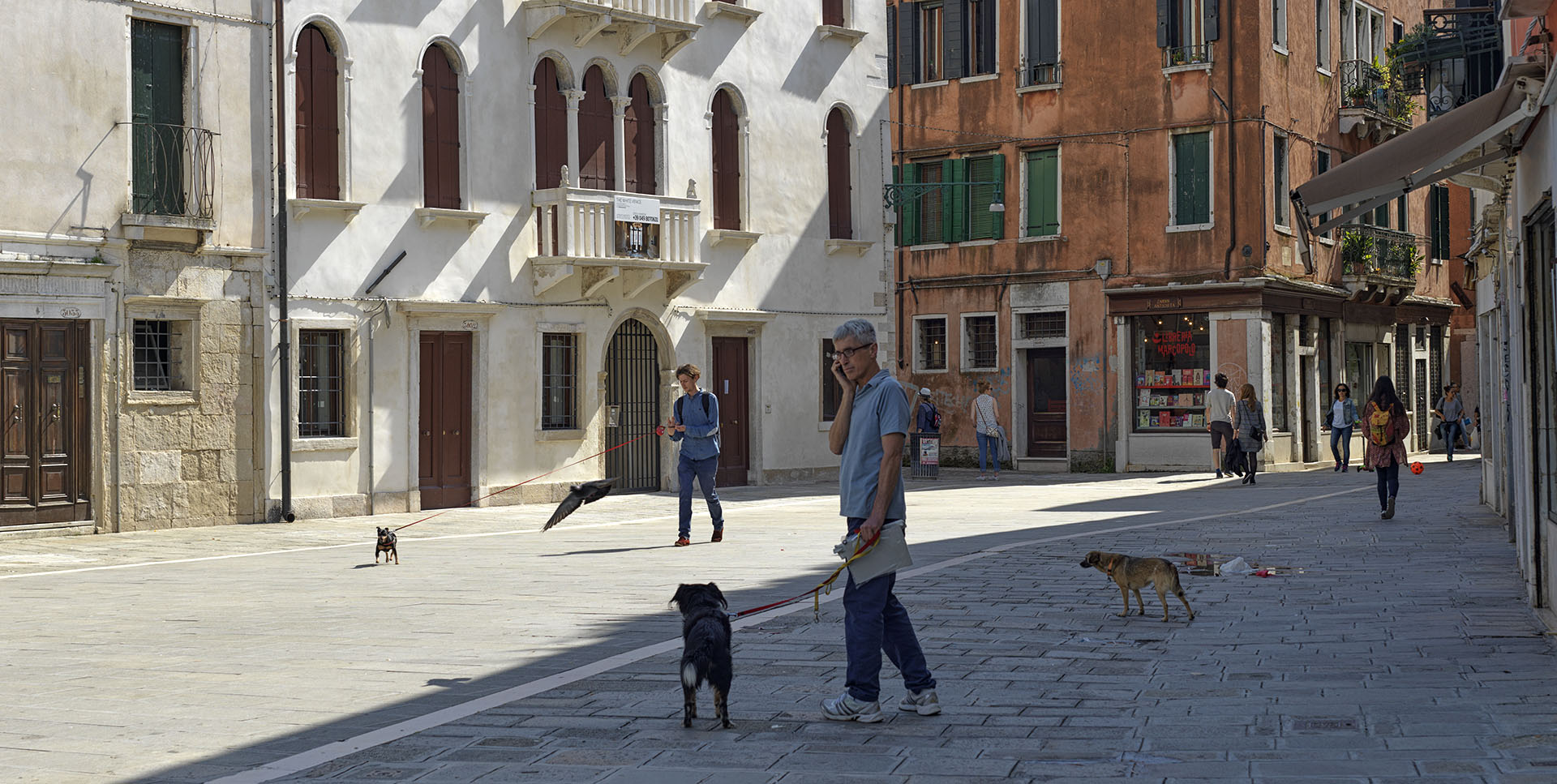
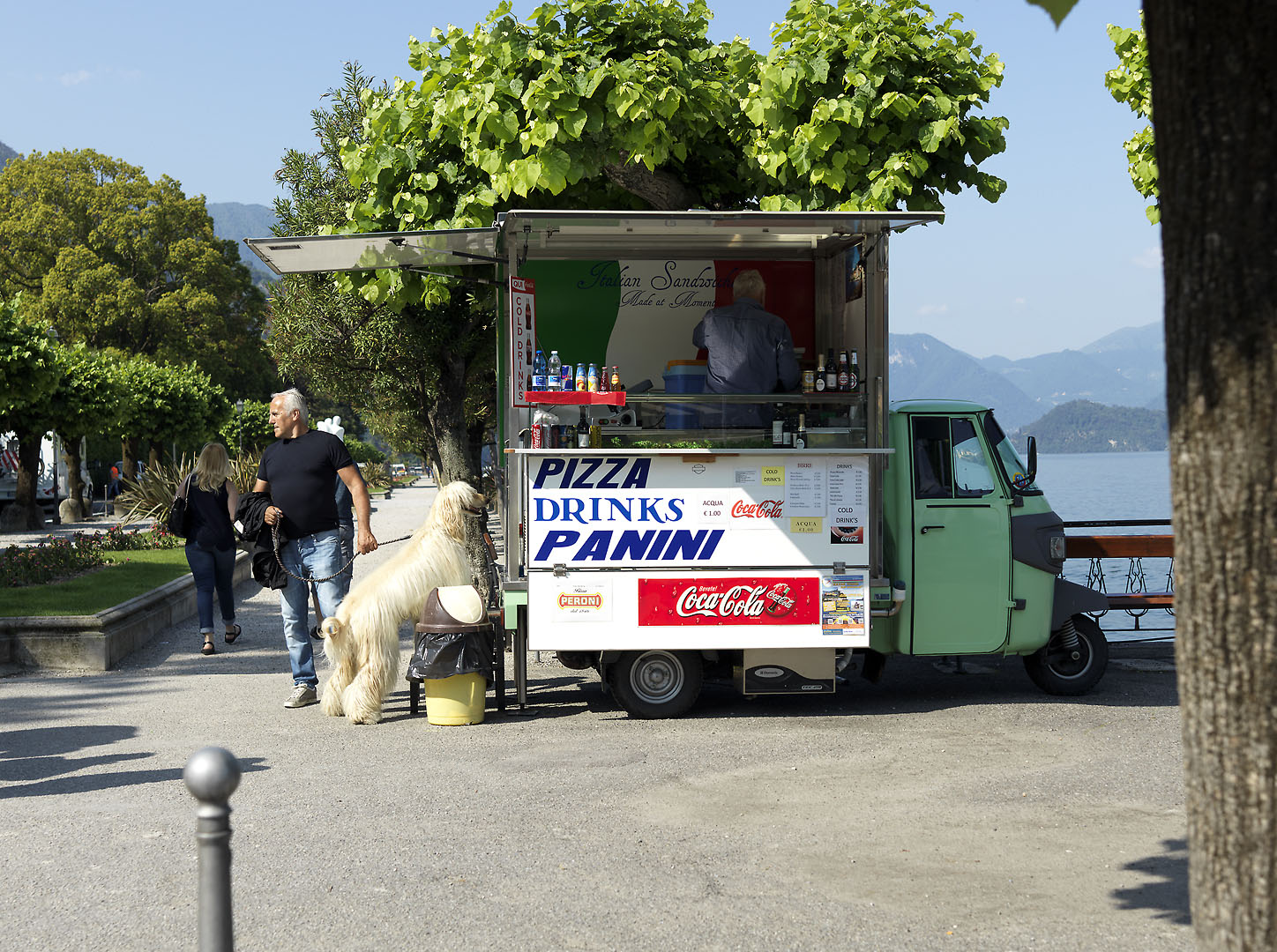
Sometimes a picture with a group of unrelated people can achieve a sort of balletic unity. In the picture below, there is a family group in the centre, one of whom is in a wheelchair. The child at the left rear looking at his phone seems almost posed, and at the right rear a young woman is working on a painting. All are positioned against an architecturally regular background, as if a theatre director had thought carefully about where each should go.
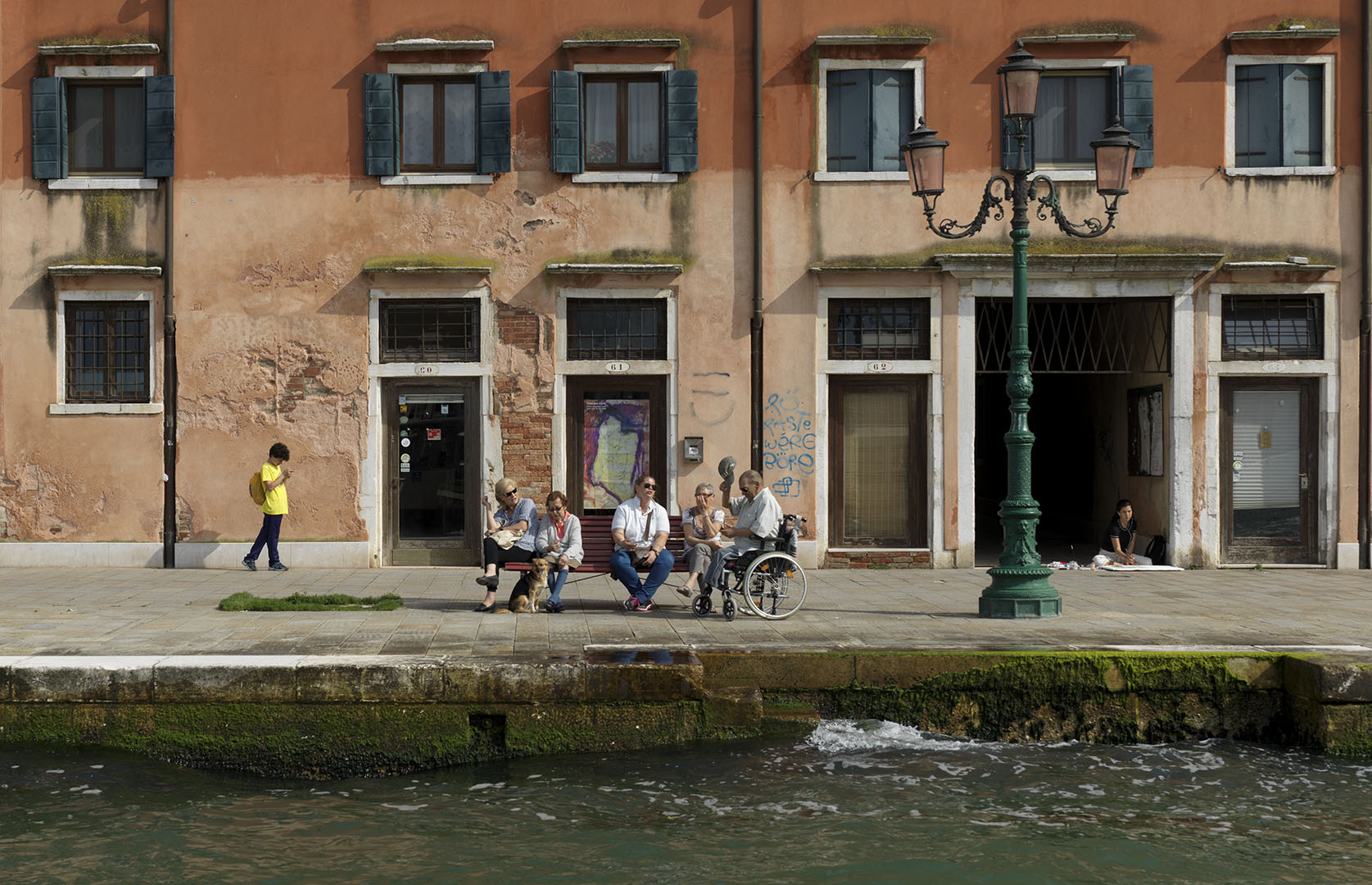
The next picture looks to me a bit like one of those scenes of frantic activity before the first act of an opera, where the cast bustle about the stage doing various bits of business while the orchestra gets stuck into the overture. Here a waiter approaches from the left holding a handful of bills, while nearby a father and daughter attend to their ice cream cones. And the little boy in the centre, hanging on to his mother’s hand, was clearly posed by someone who studied at the Louvre.
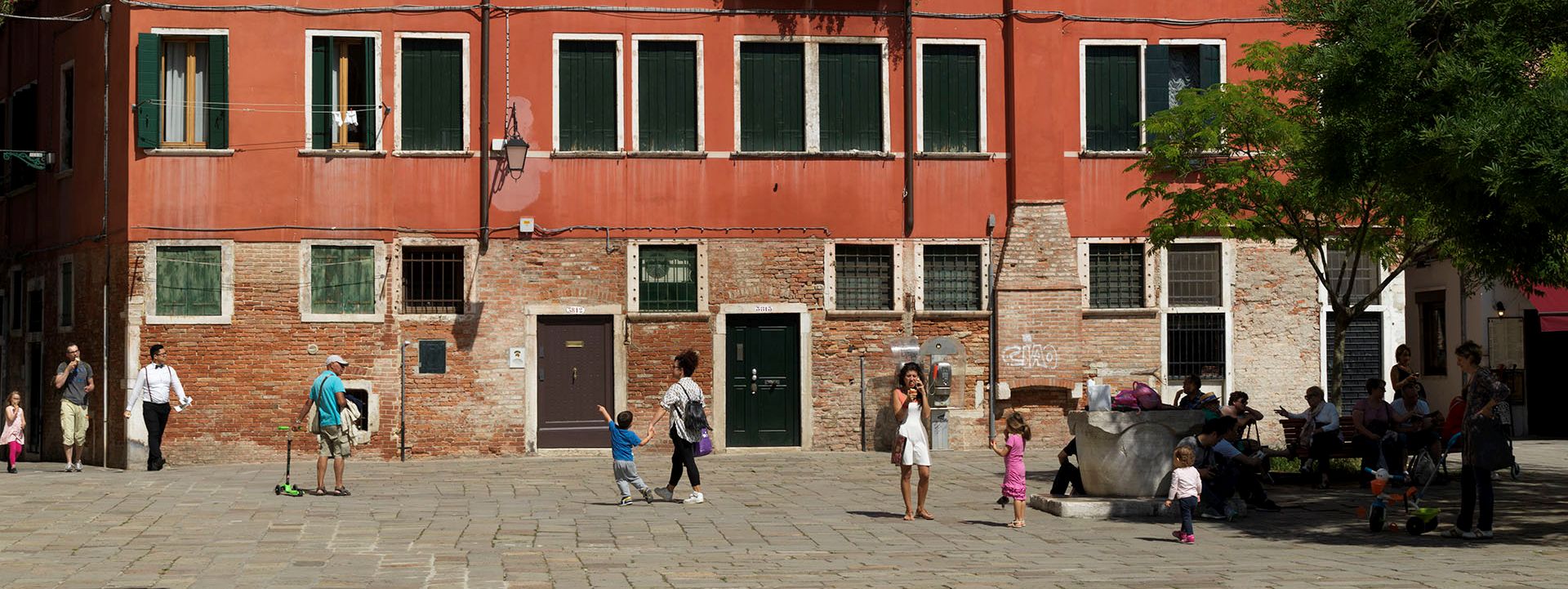
Because of the influence of photographers like Henri Cartier-Bresson and Ruth Orkin, black and white photographs tend to evoke their brand of “reportage” photography.
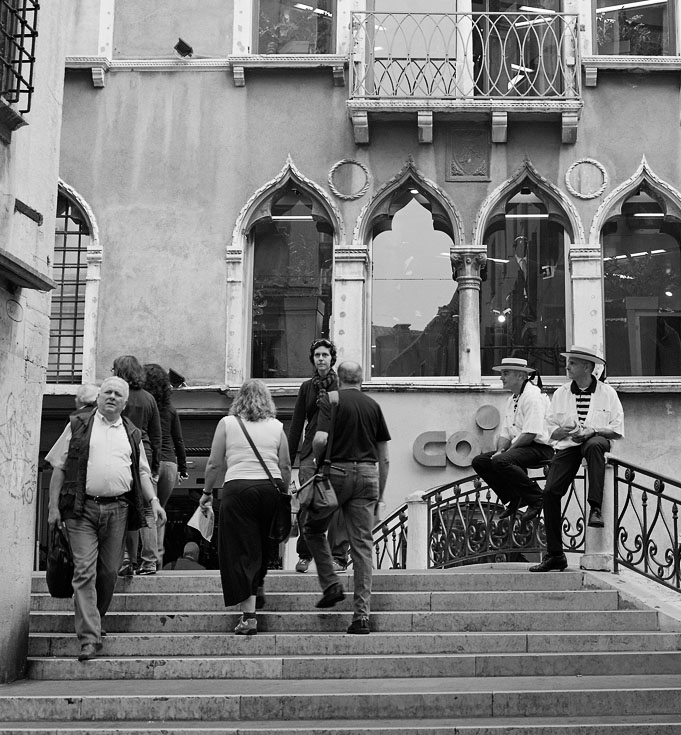
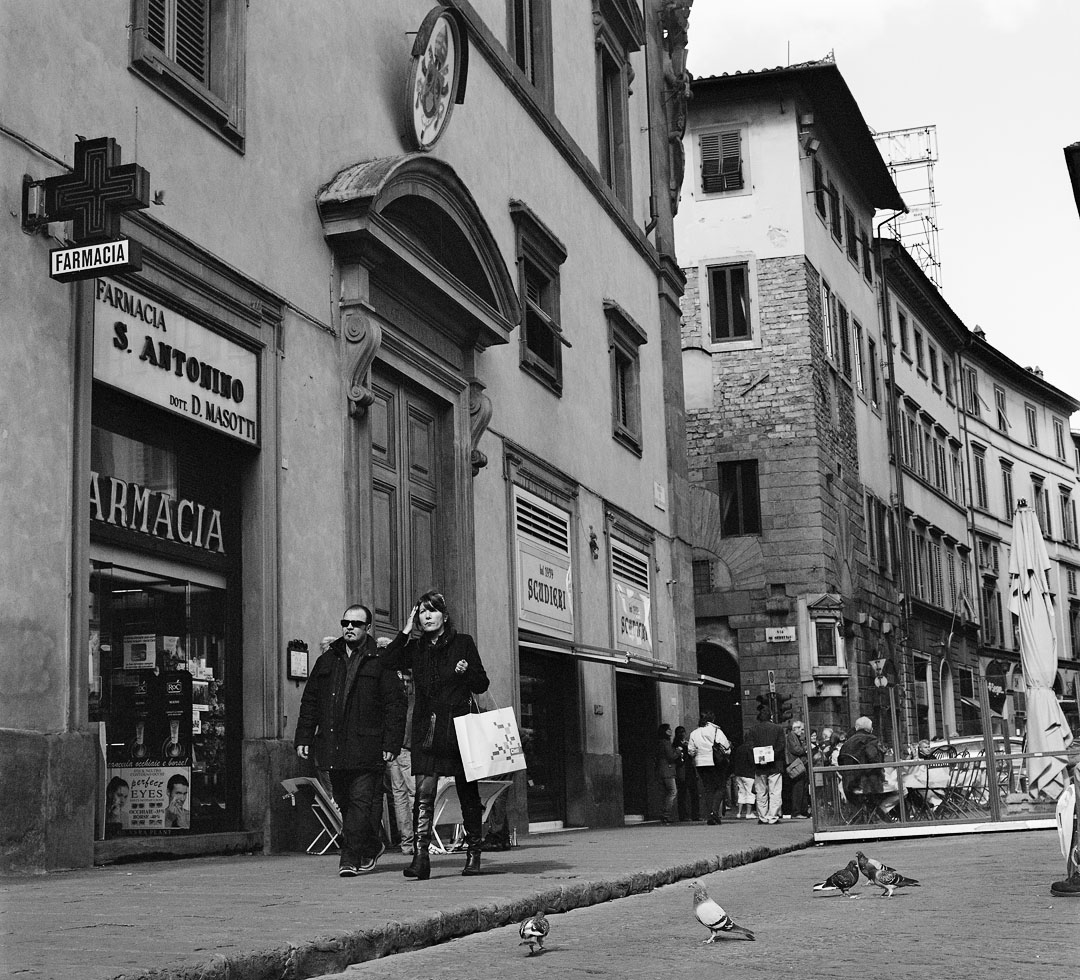
The group of young buskers below were playing in one of the back streets in Naples, raising the price of their morning coffees and pastries, or maybe a lunchtime aperitivo. I like various things about this, including the dog lying in front of the guitarist, and the way that the natty red costume of the gentleman on the left is balanced by the scooter of the same colour on the right.
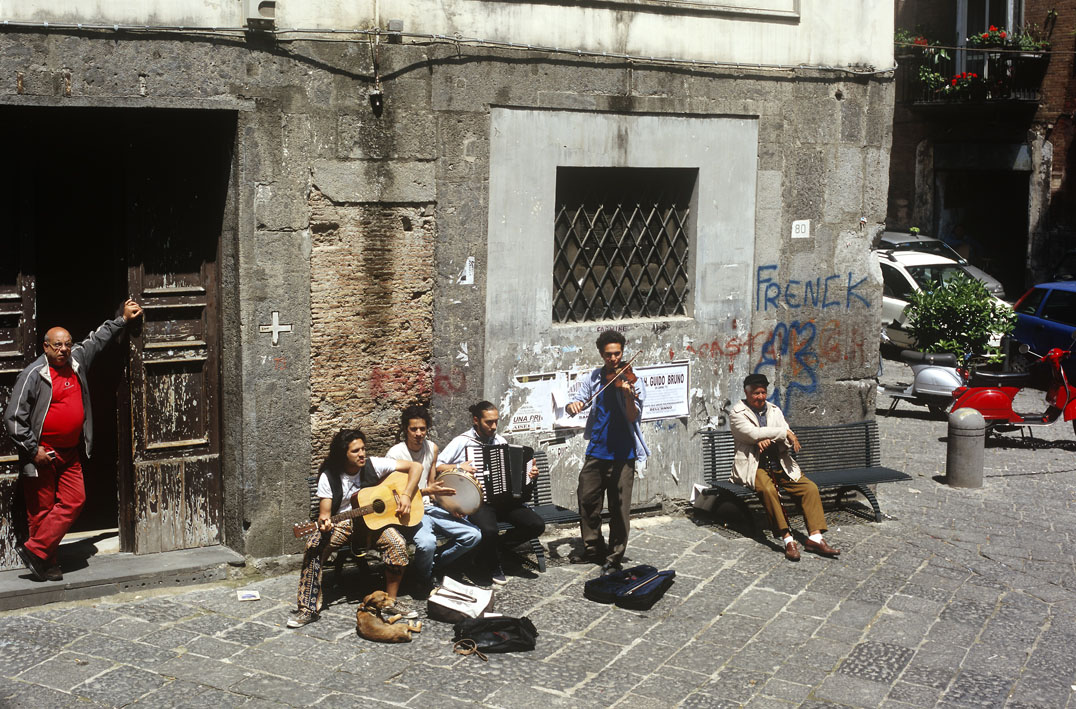
The next picture was taken in Rome, in the Piazza del Popolo. It was evening, at the time of the passeggiata when people put on their nice clothes and head out into the street for a stroll and a chat. The setting sun was shining straight along the Via del Corso, and illuminated this very elegantly dressed old gentleman, who is talking to an equally elegant young carabiniere, standing very respectfully as he listens. And the red stripe on his trousers gives the picture a bit of life.
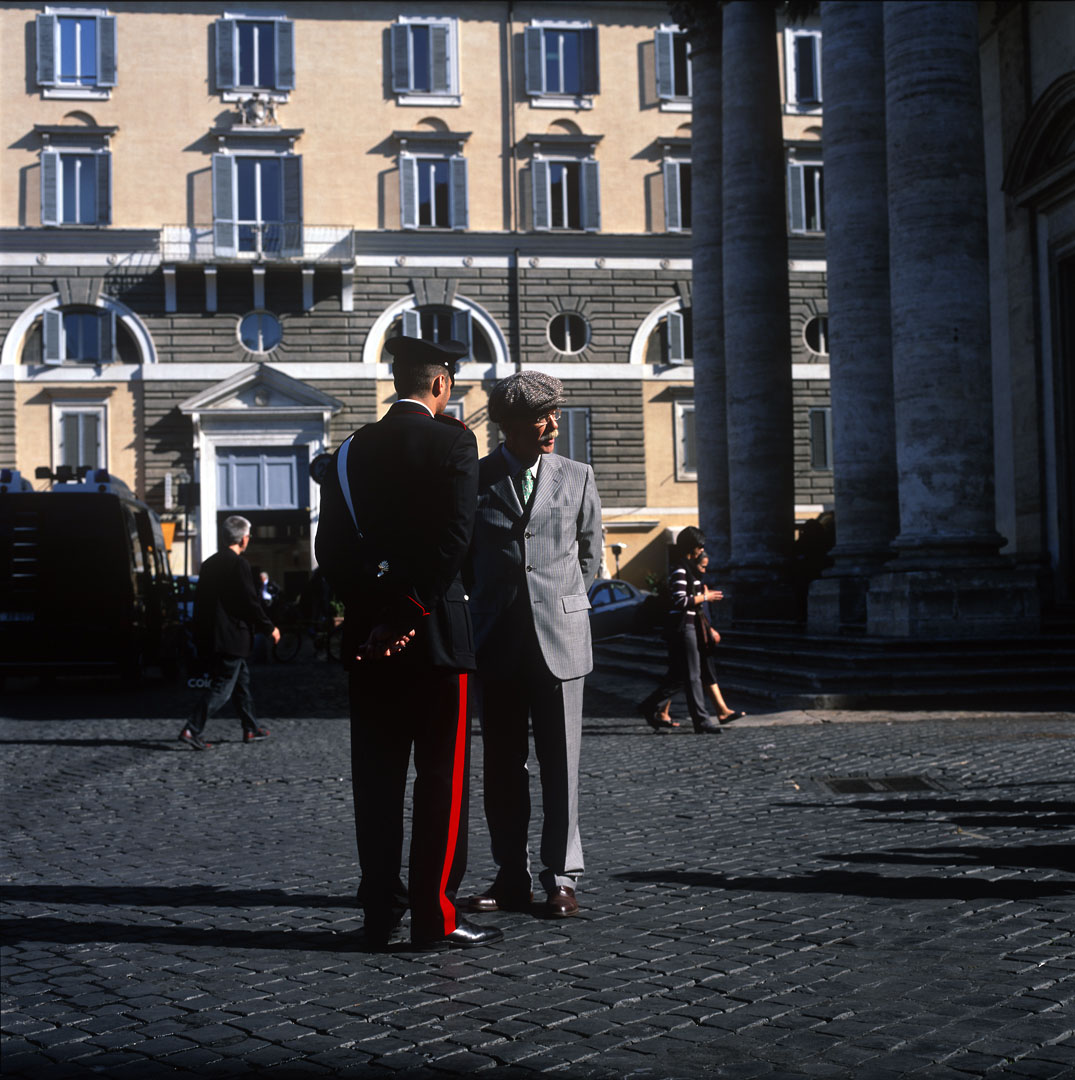
The final two photographs were taken on fast (and therefore grainy) black-and-white film on a dull rainy day in the Ghetto area of Venice. “Ghetto” is an old Venetian word for foundry, and it was the area given to the Jews to live in. It is still a place of Jewish culture, and like “lido” and “arsenal”, it is another word that Venice gave the world. The first picture is of a shopkeeper who has stepped out into the street for a quick cigarette.
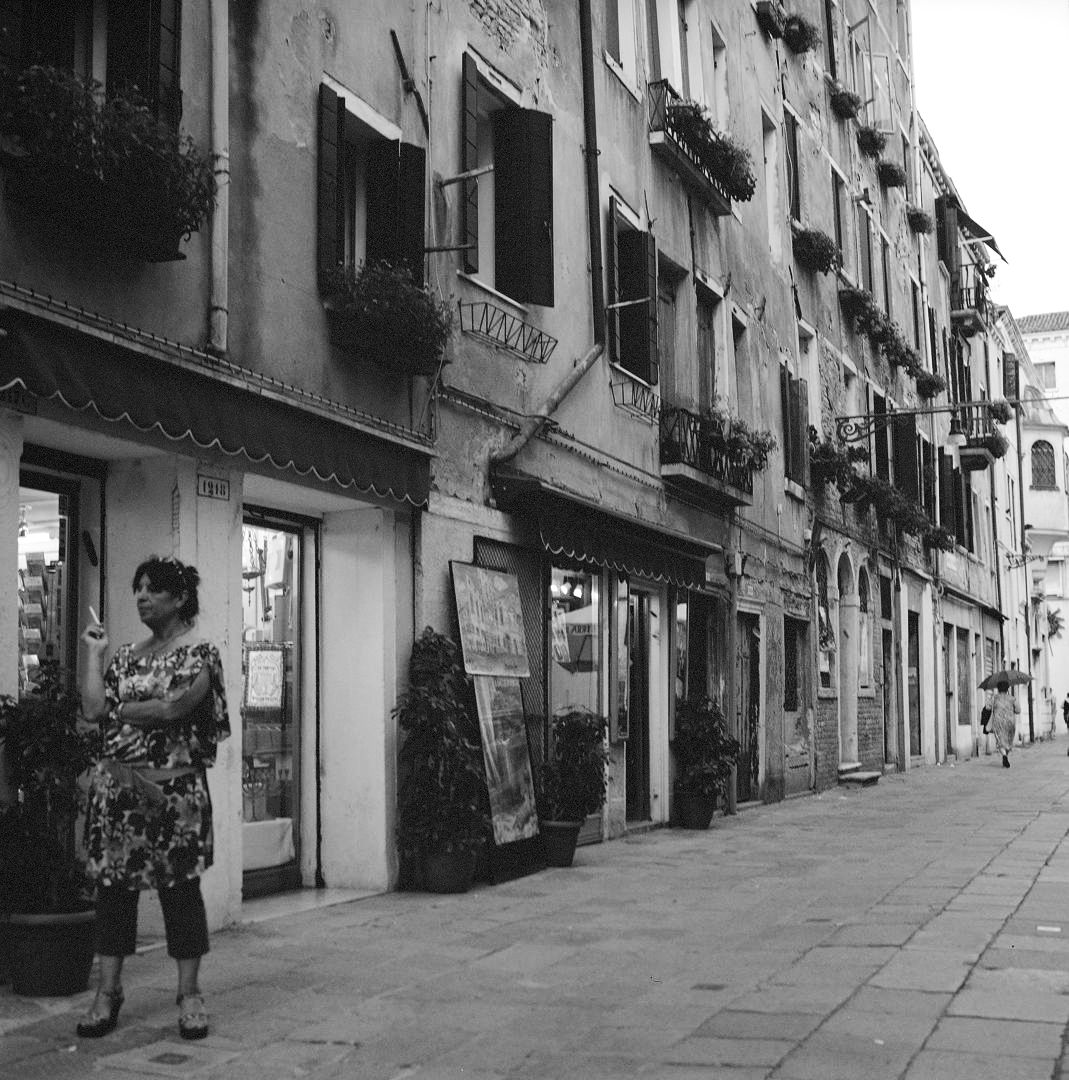
Shortly the light drizzle turned into proper rain, and a couple of deliverymen halted their boat under the Ponte delle Guglie to shelter until it passed.
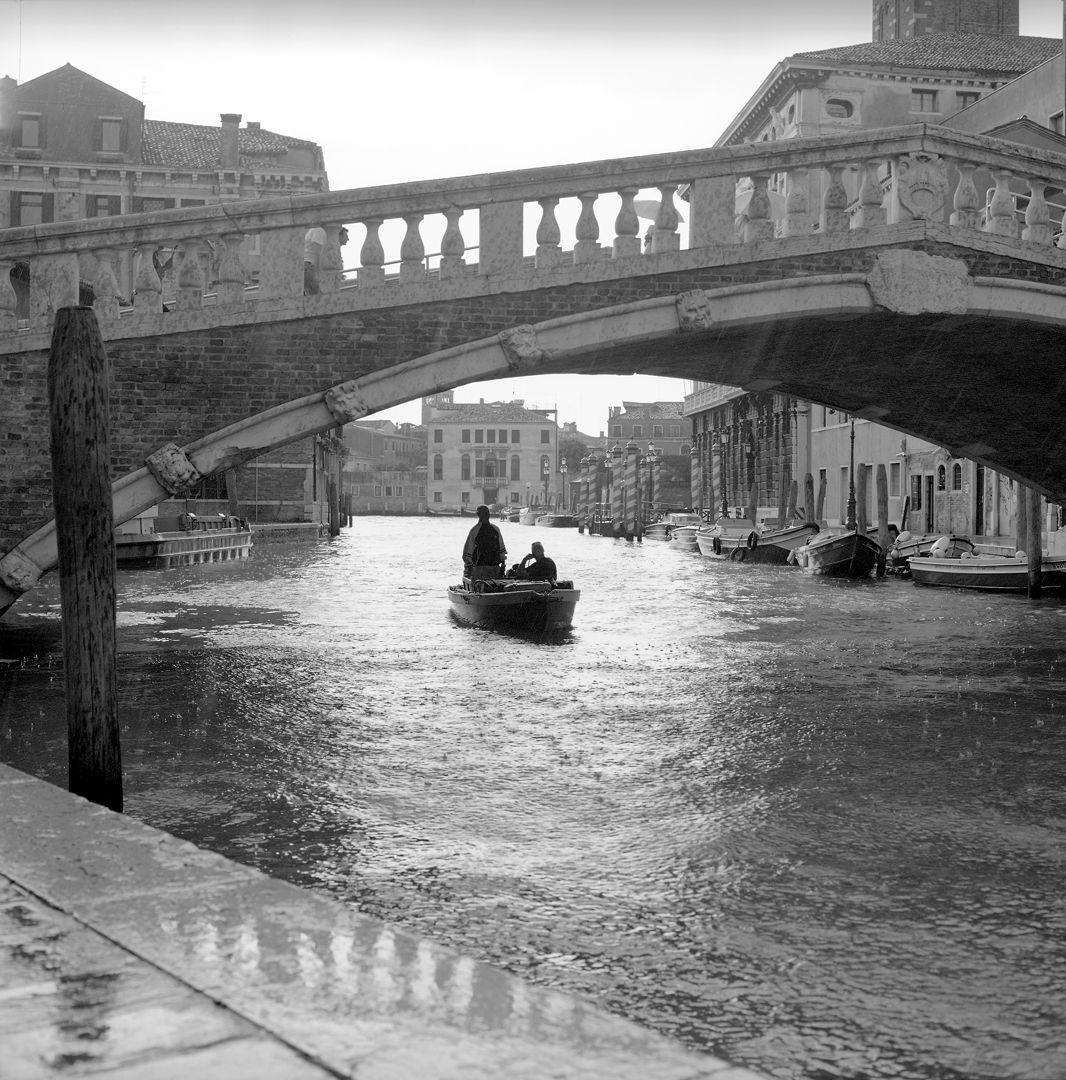
Note (1) February 2023: After many years of looking for a digital equivalent of the Contax G1 I have recently bought a Fujifilm X-Pro3 which promises to be just that. I will report separately when I have had a chance to come to grips with it.
Note (2) March 2023: I have posted again on street photography, this time in Naples, here.
And again in Bologna, here.

One Reply to “Street Photography in Italy”